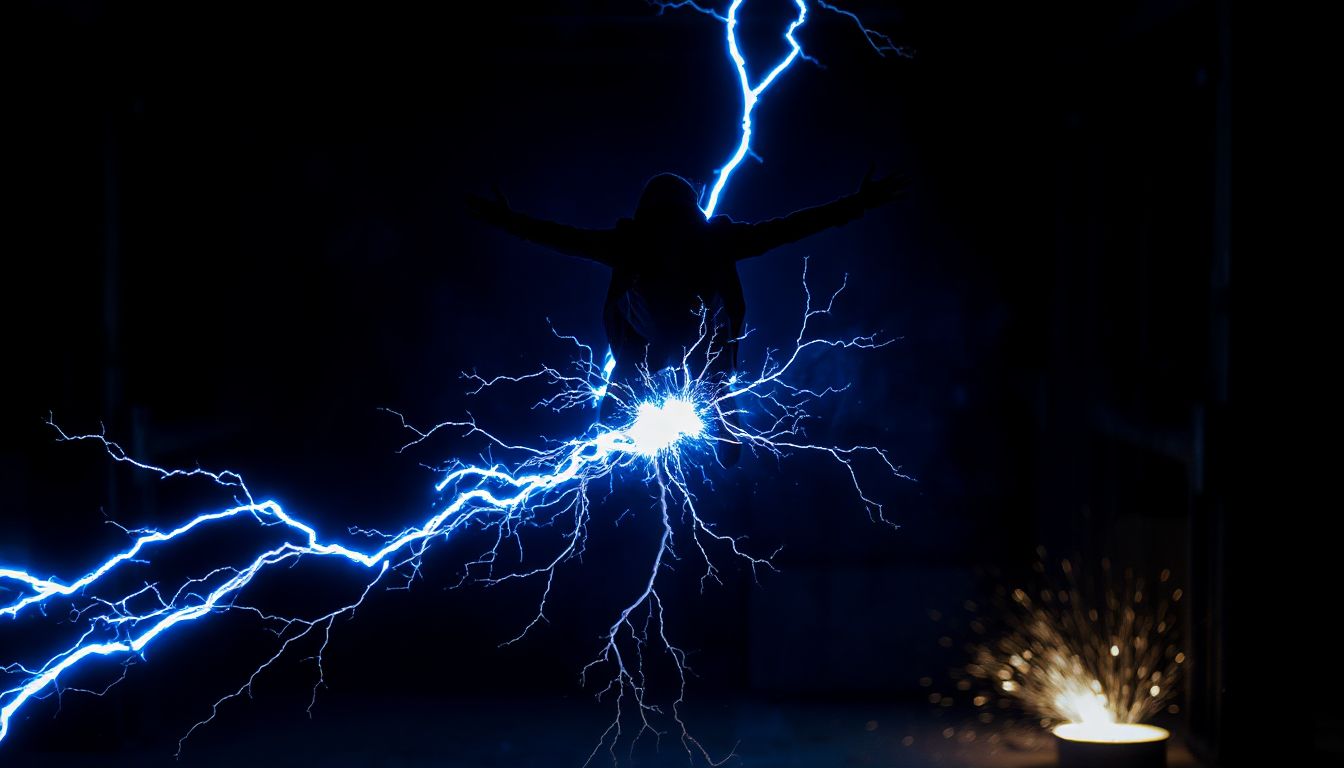The Science Behind Electric Shock
How Electric Current Affects the Human Body
Our bodies conduct electricity because they contain water and salts. When you touch a live wire or component, electric current flows through your tissues. The amount of current, not just the voltage, decides how badly you get hurt. Voltage is like pressure, pushing the current, while amperage is the amount of current. Higher resistance in your body can reduce the current, but serious danger still exists.
Common Entry and Exit Points
Electricity usually enters your body where you touch the source. It then travels a path to a point where it can exit, often to the ground or another conductor. Common entry spots are hands or fingers. Exit points might be your feet or another hand. The current’s path through vital organs, like your heart or brain, is what makes a shock very dangerous. This path can cause severe internal damage, even if outside burns look small.
Severity Factors: Voltage, Current, and Duration
Three main things control how bad an electric shock will be. First is the voltage, or the electrical “push.” Higher voltage means more current can flow. Next is the current, measured in amperes. Even a small current, like 0.1 amps, can stop your heart. Finally, the longer you stay in contact with the electrical source, the worse the injury. Brief contact might only cause a jolt, but longer exposure can lead to severe burns, organ damage, or even death.
Everyday Risks
Household Electrical Hazards
Our homes are full of electrical dangers if we are not careful. Faulty wiring, old or damaged cords, and overloaded circuits are common risks. Misusing appliances, like using a toaster near a sink, can also be risky. Water conducts electricity well, so drops of water in the bathroom or kitchen near outlets spell trouble. Imagine a child innocently putting a fork into an unused outlet. Or a hairdryer falling into a bathtub; these scenarios highlight everyday dangers.
Workplace Electrocution Dangers
Workplaces often present higher electrical risks due to heavy machinery and complex systems. Workers might face overhead power lines, especially in construction. Damaged tools or equipment can also become energized and cause shocks. Working near energized equipment without proper lockout procedures is another big risk. Each year, many workers suffer electric shocks. The Occupational Safety and Health Administration (OSHA) reports that electrocution remains a leading cause of construction fatalities, accounting for a significant number of deaths annually.
Outdoor Electrical Safety
Outside, power lines are a major electrical hazard. Always keep a safe distance from them, especially if they are sagging or look damaged. Lightning strikes are another natural electrical threat, so seek shelter during storms. Temporary electrical setups, like those for outdoor events or construction sites, need careful handling too. If you ever see a downed power line, do not touch it. Call your local power company right away.
The Medical Impact of Electric Shock
Immediate Symptoms and Internal Damage
An electric shock can cause many immediate problems. You might feel a tingling or a painful jolt. Burns can appear where the current entered and exited your body. Muscles may contract so hard you cannot let go of the wire. The current can disrupt your heart’s rhythm, leading to cardiac arrest. It can also affect your brain, causing confusion or even seizures. Internally, electricity can damage muscles, nerves, and organs like your kidneys.
Long-Term Health Consequences
The effects of a bad electric shock can last for years. Some people suffer from nerve damage, leading to chronic pain or weakness. Memory problems, trouble sleeping, and changes in mood are also possible. Severe burns can require multiple surgeries and cause permanent scars. Medical experts often note that victims of serious electric shock may face ongoing physical and psychological challenges. These can include anxiety or even post-traumatic stress disorder from the trauma.
First Aid for Electric Shock

Assessing the Scene and Ensuring Safety
Your first step is to ensure your own safety. Never touch someone still in contact with an electrical source. You could get shocked too. Find the main power switch or unplug the item if possible. If you cannot safely turn off the power, use a non-conductive object, like a wooden stick, to move the source away from the person. Do not use anything wet or metallic. Always make sure the power is off before you get close.
Here is how to safely approach an electric shock victim:
- Check for obvious dangers, like sparks or water.
- Locate the main power switch and turn it off.
- If the switch is far away, try to unplug the device.
- If unable to turn off power, use a dry, non-metal object to push the person away.
- Only after the power is off, approach the victim.
Performing CPR and Basic Life Support
Once the scene is safe, check the victim’s breathing and pulse. If they are not breathing or have no pulse, call emergency services immediately. Begin CPR if you are trained and paramedics tell you to. Follow their instructions carefully. Continue chest compressions and rescue breaths until medical help arrives or the person starts breathing on their own.
What to Do While Waiting for Professional Help
While waiting for paramedics, keep the victim still and comfortable. Cover any burns with a clean, dry dressing. Do not use ice or butter on burns. Keep checking their breathing and pulse until help gets there. Even if the person seems fine, they need medical attention. Internal injuries might not be visible right away. Always call emergency services immediately after an electric shock.
Implementing Safety Standards and Regulations
Following electrical safety codes and rules saves lives. Groups like the National Electrical Code (NEC) set standards for safe electrical work. These rules help ensure that buildings and equipment are wired correctly. Adhering to these standards protects everyone from harm.





